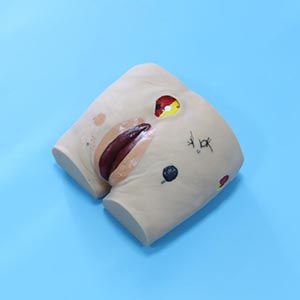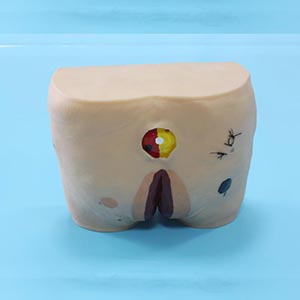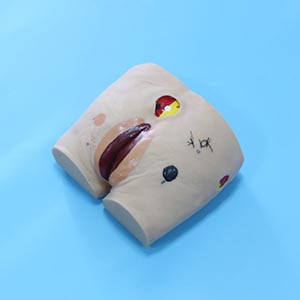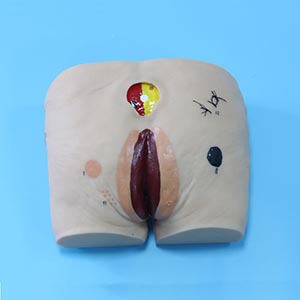ADA MED SUPPLY LIMITED
Phone:+86 19937901373
Tel:+86-0379-65160607
Email:adaanatomy@adaanatomy.com

Article tag: Advanced bedsore Care Model Medical Care Model BIX-H10

Decubitus sores (also known as pressure sores or decubitus ulcers) are a common clinical problem in patients who are bedridden or have reduced mobility for a long period of time, especially in the elderly and severely ill. Bedsores not only cause discomfort and complications for patients, but also significantly affect the quality of care and treatment. Effective bedsore care requires caregivers with deep clinical knowledge and skilled operational skills. As an innovative nursing training tool, the advanced bedsore nursing model is designed to help nurses improve their skills and optimize nursing programs by simulating real nursing scenarios, thereby improving the quality of patient care and clinical treatment results. This article will explore the role of advanced bedsore care models in improving quality of care and treatment outcomes, combined with personal growth, clinical significance, industry expert perspectives, and data.
Clinical significance of advanced bedsore nursing model

1. Improve the skills and judgment of nursing staff
The advanced bedsore care model simulates complex bedsore cases to help nurses improve their understanding and operational skills in early identification, staging assessment, wound care, and prevention and treatment strategies. In traditional training, nursing staff often can only learn and practice through a small number of clinical cases, and it is difficult to fully contact complex bedsore cases. The advanced bedsore care model provides a risk-free environment where caregivers can practice repeatedly and improve their clinical judgment and operational proficiency through feedback from simulated scenarios. For example, the simulation of deep bedsores and infectious bedsores can help caregivers better understand how to manage wounds, choose the right dressing, adjust the patient's position, and so on, thereby reducing care errors in the clinic.
2. Improve the quality of patient care
Through the training of advanced nursing model, nurses can make personalized nursing plans according to patients' conditions and needs, so as to improve the quality of patient care. Studies have shown that nurses who have received simulation training can better use measures to prevent bedsores in actual care, such as regularly changing positions, keeping skin clean and dry, and using special mattresses, so as to effectively reduce the incidence of bedsores in patients. According to a report in the journal Nursing Research, nursing staff who received simulated training improved the effectiveness of nursing interventions in preventing and treating bedsores by 20% to 30%.
Industry expert opinion: The importance of simulation training

Industry experts agree that the advanced bedsore care model has an irreplaceable role in nursing education. Senior nursing experts pointed out that the prevention and treatment of bedsore is not only theoretical learning, but more importantly, the combination of theory and practice, and simulation training is the key to this combination. Simulation models not only give caregivers the opportunity to practice repeatedly in a risk-free environment, but also enhance their ability to make the right decisions in emergency situations. Through the setting of simulation scenarios, nurses can try a variety of nursing methods in different clinical situations, so as to be more responsive in the face of complex patients.
A hospital nursing supervisor said: "After using the advanced bedsore care model, our nursing team's response speed and accuracy in dealing with high-risk patients have been significantly improved. Especially for patients with multiple comorbidities, we can flexibly adjust the care plan according to the specific situation to ensure that the patient's wound healing and skin health are maximized."
Data support: Model training improves nursing quality

According to a multicenter clinical study, caregivers trained using an advanced bedsore care model experienced significant improvements in quality of care and treatment outcomes. The study showed that nursing staff trained by the model, in practice, were able to identify the high risk factors for bedsores in advance and take appropriate interventions, and the incidence of bedsores in patients decreased by 18%. At the same time, these paramedics improved their accuracy and efficiency in wound management by 25 percent. Other studies have shown that nurses trained in advanced nursing simulation can effectively reduce the incidence of complications during patient care, especially in the case of patients in bed for a long time or skin compression, and can take more refined and timely intervention measures, which greatly improves the overall recovery speed of patients.
Personal growth and professional development
The training of the advanced bedsore care model not only improves the clinical skills of the nursing staff, but also promotes their professional development. Through simulation training, nurses can gradually improve their problem-solving ability and self-confidence, and enhance their communication and coordination ability with patients and teams. More importantly, nursing staff are able to enhance their comprehensive nursing capabilities in this way, thus providing more opportunities for advancement in their future careers. The professional quality of nursing staff is improved, which can not only improve their professional ability, but also provide higher quality nursing services for patients.
conclusion
The advanced bedsore nursing model helps nurses master the skills of complex bedsore nursing by providing a simulated training environment, thereby improving the quality of patient care and clinical treatment. Both data and expert opinion show that caregivers using the advanced care model can better prevent and manage bedsores in practice, significantly reduce the incidence of complications in patients, and improve the speed of recovery and quality of life of patients. Therefore, advanced bedsore nursing model is not only an important tool for nursing education, but also a key factor to improve the quality of clinical nursing and ensure patient safety.